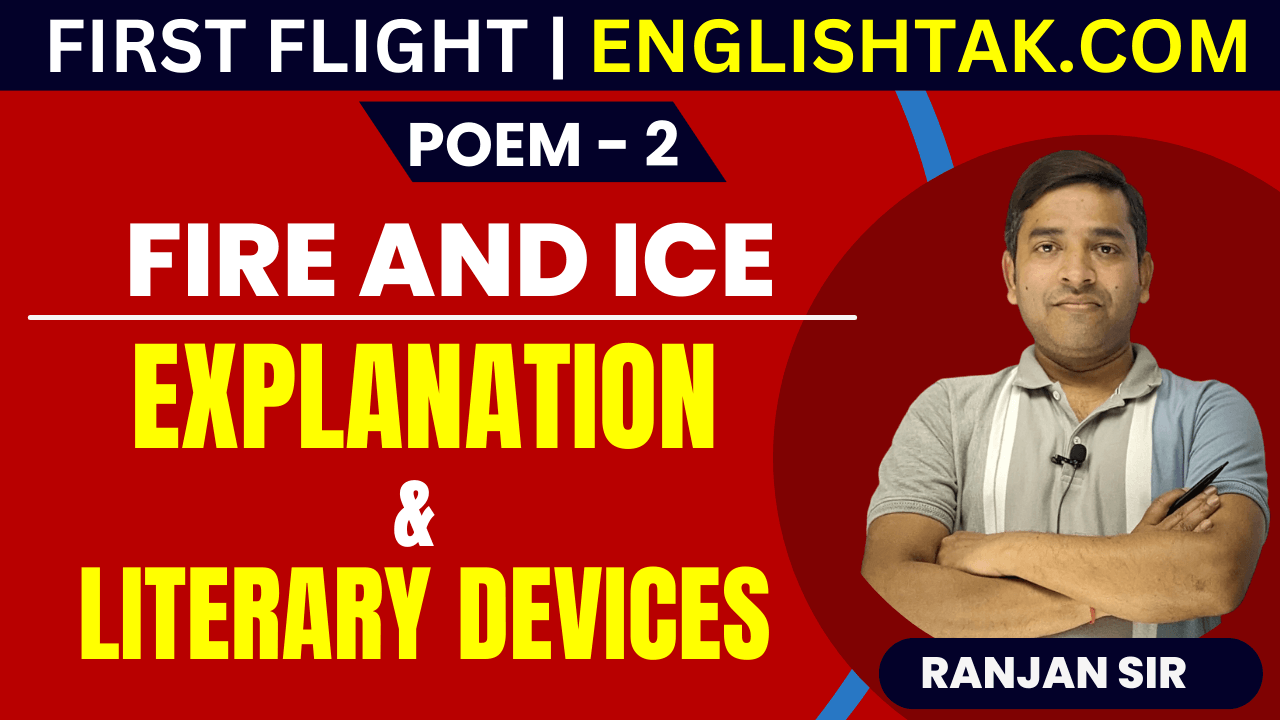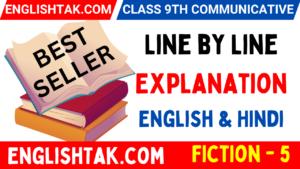![]()
Fire and Ice Explanation with Literary Devices
Table of Contents
Fire and Ice – Here is the Class 10 English First Flight Poem 2 Fire and Ice Detailed explanation of the poem along with the literary devices used in the Poem.
Fire and Ice Explanation with Literary Devices
Some say the world will end in fire,
Some say in ice.
From what I’ve tasted of desire
I hold with those who favor fire.
Explanation: In these lines, the poet introduces two opposing ideas about how the world might end: fire and ice. He states a personal preference for fire because of his experience with desire, suggesting that fire represents passion and intense emotion.
But if it had to perish twice,
I think I know enough of hate
To say that for destruction ice
Is also great
And would suffice.
Explanation: Here, Frost considers the alternative scenario of the world ending “twice.” He believes that if the world were to end in a cold and emotionless way (represented by ice), he has experienced enough hatred to understand that ice is also capable of causing destruction, and it would be sufficient as an end.
Fire and Ice Theme: Fire and Ice Explanation with Literary Devices
Theme: The poem explores different perspectives on how the world could end—through fiery passion (desire) or cold indifference (hate). It suggests that both intense emotion (fire) and lack of emotion (ice) can lead to destruction, reflecting on human nature and the potential causes of global catastrophe.
Fire and Ice Literary Devices: Fire and Ice Explanation with Literary Devices
In Robert Frost’s poem *”Fire and Ice,”* several poetic devices are used to enhance its meaning and impact. Here’s a breakdown of the key poetic devices:
1. Alliteration:
Repetition of the initial consonant sounds in words close to each other.
Example: “Some say” (repetition of the ‘s’ sound).
2. Assonance:
Repetition of vowel sounds within nearby words.
Example: “I hold with those who favor fire” (repetition of the ‘o’ sound).
3. Imagery:
Descriptive language that creates visual images in the reader’s mind.
Example: “Fire” and “Ice” are used as images to symbolize strong emotions like desire and hatred.
4. Symbolism:
The use of symbols to represent ideas or qualities.
“Fire” symbolizes desire, passion, and possibly destruction.
“Ice” symbolizes hatred, coldness, and indifference.
5. Antithesis:
Contrasting ideas placed together to create a balanced effect.
Example: The poem contrasts fire (desire) and ice (hate) as two opposing forces that could cause destruction.
6. Personification:
Assigning human characteristics to non-human things.
The concepts of “fire” and “ice” are personified as if they have the power to destroy the world.
7. End Rhyme:
Rhyme occurring at the end of lines.
Aba
abc
bcb
Example: “fire” rhymes with “desire” and “ice” rhymes with “suffice.”
8. Metaphor:
An implicit comparison between two unlike things.
Fire is metaphorically compared to desire, and ice is compared to hatred.
9. Paradox:
A statement that seems contradictory but reveals a deeper truth.
The idea that both fire (desire) and ice (hatred) can destroy the world is paradoxical, as they are opposing elements.
10. Meter:
The poem follows a variable meter, though it loosely conforms to iambic tetrameter and iambic dimeter, giving it a rhythmic flow.
These poetic devices come together to create a concise yet powerful reflection on the destructive potential of both fiery desire and icy hatred.
English For CBSE Classes 8th, 9th, 10th, 11th & 12th
Dust of Snow Summary and Theme
Dust of Snow Explanation and Poetic Device
Fire and Ice Poem Summary and Theme
Two Stories about Flying Very Short Questions
How I Taught My Grandmother to Read Extra Question Answers
Essay on Teacher’s Day in English





